#Celtic Festivals
Explore tagged Tumblr posts
Text
Unveiling the Spellbinding Origins of Halloween Shaina Tranquilino October 30, 2023
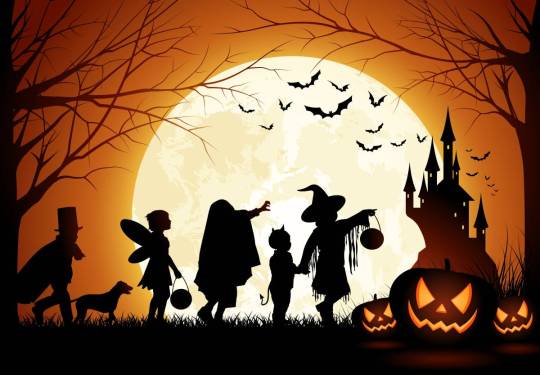
As orange leaves flutter to the ground and jack-o'-lanterns flicker in the night, it's undeniable that Halloween has become a beloved, spine-tingling celebration worldwide. But have you ever wondered about the bewitching origins hiding behind this enchanting holiday? Join us on a captivating journey as we unravel the mysterious history of Halloween.
Ancient Roots: The roots of Halloween can be traced back over 2,000 years to an ancient Celtic festival called Samhain (pronounced sow-in). Celebrated by the Celts in Ireland, Scotland, and parts of Britain, Samhain marked the end of summer and welcomed the harvest season. On October 31st, they believed that the boundary between the living and dead blurred, allowing spirits to roam freely among them.
Trick-or-Treating Takes Shape: During Samhain festivities, people would dress in costumes made from animal hides, attempting to ward off evil spirits or disguise themselves from mischievous entities. They also lit bonfires as a form of protection against malevolent forces—a tradition that still echoes today with our glowing Jack-o'-lanterns.
Christian Influence: In the 9th century A.D., Christianity began spreading throughout Celtic lands. Pope Gregory III designated November 1st as All Saints' Day or All Hallows' Day to honour saints and martyrs who didn't have their own feast day yet. To integrate pagan traditions into Christian practices and discourage Celtic rituals during Samhain, November 1st became known as All Hallows' Eve—the precursor to modern-day Halloween.
Ghostly Evolutions: As time progressed, various customs blended together to shape Halloween into its present form. In Medieval England, "souling" emerged when beggars went door-to-door offering prayers for departed souls in exchange for food or money—a practice that later inspired modern-day trick-or-treating. Similarly, in Scotland and Ireland, "guising" appeared, with people dressing up in costumes to perform songs, poems, or tricks for treats.
The Immigrant Influence: Halloween as we know it today found its way to North America through Irish and Scottish immigrants during the 19th century. In the United States, these traditions merged with Indigenous harvest celebrations and other European customs. The result was a uniquely "American Halloween"—a time of community gatherings, parties, parades, and spooky festivities that captured hearts across the nation.
Modern-Day Celebrations: In recent decades, Halloween has gained immense popularity worldwide. It has evolved into a holiday celebrated by people of all ages—both young and old. Festivities range from creatively carved pumpkins to haunted houses, costume parties to horror movie marathons—all embraced as part of this spirited celebration.
As darkness descends on All Hallows' Eve each year, we're reminded of the fascinating history behind Halloween's enduring magic. From ancient Celtic rituals to religious adaptations and cultural exchanges, this captivating holiday has grown into an enchanting blend of tradition and fun.
So whether you find yourself mesmerized by ghostly tales around a bonfire or joining the chorus of tiny witches and superheroes chanting "trick-or-treat," remember that Halloween is more than just costumes and candy—it's a bewitching journey through time connecting us to centuries-old customs and shared human experiences.
#Halloween#Halloween Origins#Halloween History#Samhain Traditions#Celtic Festivals#Pagan Roots#All Hallows Eve#Ancient Beliefs#Harvest Celebrations#October 31#October#Spooky season#Happy Halloween#Trick or Treat#jack o lantern#spooky#spooky time#hello october#autumm
21 notes
·
View notes
Text
0 notes
Text

Blessed Lammas/Lughnasadh 🪻🥖🌻
#lammas#lughnasadh#pagan#fire festival#summer#wiccan#wheel of the year#pagan holiday#moodboard#celtic#celtic holiday#witchy aesthetic#witchcraft#witchblr#sabbats#sabbat#wicca
263 notes
·
View notes
Text






If there's a bustle in your hedgerow, don't be alarmed now It's just a spring clean for the May queen Yes, there are two paths you can go by, but in the long run There's still time to change the road you're on
Led Zeppelin
[pics from pinterest]
#aesthetic#cottagecore#moodboard#nature#naturecore#flowers#led zeppelin#may queen#celtic#midsommar#midsummer#mother nature#nature art#may festival#Bealtaine#beltane#may#spring#eostre#demeter#persephone
125 notes
·
View notes
Text
Important Facts about Samhain from an Irish Celtic Reconstructionist
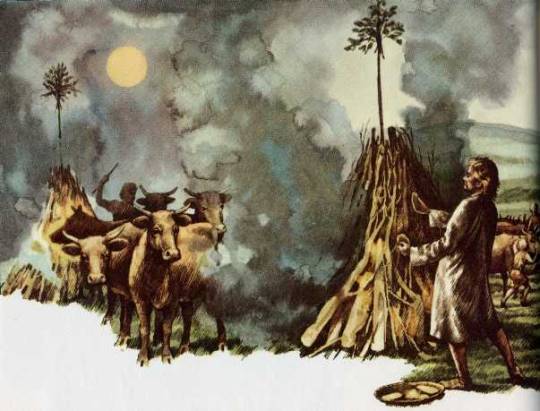
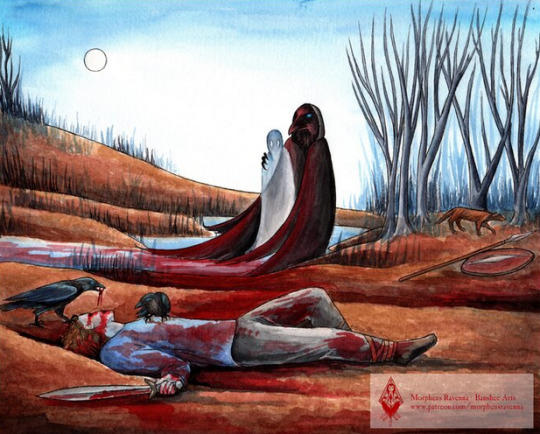

Pronunciation
SOW-in or SOW-een ~NOT~ Sam-han, Sam-win etc.
Dates
Most reconstructionists celebrate Samhain on Oct 31-Nov 1, however some may choose to celebrate on Gregorian Nov 13-14 as this would match the Julian dates of Oct 31-Nov 1. Some also believe that it was a three day festival spanning Oct 31- Nov 2 on which Nov 2 is specifically devoted to ancestral veneration, but there is no specific evidence of this, only possible extrapolation from more modern practices.
Following the Celtic method of days beginning at sunset, regardless of the specific dates you choose to celebrate on your festivities should begin at sunset and end at sunset.
Importance in the Mythos
Ná Morrighan has a strong connection to this time of year thanks to the story of Cath Dédenach Maige Tuired (The Last Battle of Mag Tuired) in which she is found depicted as the ‘Washing Woman’ (sometimes washing herself in the river and other times washing the bloodied armor of the soldiers that would die that day), on the eve of the battle which is also Samhain. The Dagda approaches her and couples with her (creating the ‘Bed of the Couples’ along the bank of river and granting Dagda her blessing in the battle to come). This encounter seems to over emphasize the liminality of the encounter by taking place during the changing of the year and with the couple each standing with ‘one foot on either bank’ of the river.
She and her sisters (Badb and Macha) then use various forms of magic to rain destruction on their enemies (in the form of fire and blood). After the day is won Morrighan speaks a prophecy that describes what is taken by some to be the end of days and others to be the events which will later lead to the Ulster Cycle.
Beneath the peaceful heavens lies the land. It rests beneath the bowl of the bright sky. The land lies, itself a dish, a cup of honeyed strength, there, for the taking, offering strength to each There it lies, the splendour of the land. The land is like a mead worth the brewing, worth the drinking. It stores for us the gifts of summer even in winter. It protects and armours us, a spear upon a shield Here we can make for ourselves strong places, the fist holding the shield Here we can build safe places, our spear-bristling enclosures. This is where we will turn the earth. This is where we will stay. And here will our children live to the third of three generations Here there will be a forest point of field fences The horn counting of many cows And the encircling of many fields There will be sheltering trees So fodderful of beech mast that the trees themselves will be weary with the weight. In this land will come abundance bringing: Wealth for our children Every boy a warrior, Every watch dog, warrior-fierce The wood of every tree, spear-worthy The fire from every stone a molten spear-stream Every stone a firm foundation Every field full of cows Every cow calf-fertile Our land shall be rich with banks in birdsong Grey deer before Spring And fruitful Autumns The plain shall be thronged from the hills to the shore. Full and fertile. And as time runs its sharp and shadowy journey, this shall be true. This shall be the story of the land and its people We shall have peace beneath the heavens. Forever
(based on the translation by Isolde Carmody)
It is also mentioned in Echtra Cormaic that on this festival every seven years the high king would host a feast, it was at this time new laws could be enacted. (but it seems that individual Tuathas or possibly kings of the individual providence may have done this for their territories at Lughnasadh).
It seems to be a time considered especially susceptible to (or of) great change as it is the time which the Tuatha de Danann win victory over the Formorians and take control of Ireland, the invasion of Ulster takes place at this time in Táin bo Cúailnge, in Aislinge Óengusa Óengus and his bride-to-be are changed from bird to human and eventually he claims kingship of Brú na Bóinne at this time of year.
Celebration Traditions
Samhain is the beginning of the “dark half” of the year and is widely regarded as the Insular Celtic equivalent of the New Year. The “dark half” of the year was a time for story telling, in fact in this half of the year after dark is considered the only acceptable time to tell stories from the mythological and Ulster cycle (the Fenian cycle being assumed to be no older than the 12th century based on linguistic dating). Traditionally anything that had not been harvested or gathered by the time of this festival was to be left, as it now belonged to the Fae (in some areas specifically the Púca).
This was also an important time for warding off ill luck in the coming year. Large bonfires would be built and as the cattle were driven back into the community from the pastures they would be walked between these bonfires as a method of purification (the reverse custom of Bealtaine where the livestock were walked between the fires on their way out to the summer pastures). Assumed ritualistic slaughter of some of the herd would follow (though this perhaps had the more practical purpose of thinning the herd before the winter and creating enough food for the feasting). In some areas the ashes from these fires would be worn, thrown or spread as a further way to ward off evil.
Homes would be ritualistically protected from the Aos Sí (Fae or ‘Spirits’) through methods such as offerings of food (generally leaving some of the feasting outside for them), carving turnips with scary faces to warn them off (we now tend to do this with gourds), and smoke cleansing the home (in Scottish saining) traditionally with juniper, but perhaps rowan or birch might be an acceptable alternative. It is likely these would be part of the components used in Samhain bonfires as well, for the same reason.
Lastly based on later traditions as well as links in the mythology this is a time where divination practices or those with the ‘second sight’ were regarded to be especially potent.
Art Credit @morpheus-ravenna
My Kofi
#samhain#irish#irish mythology#irish polytheism#irish paganism#celtic reconstructionism#celtic paganism#celtic polytheism#na morrigna#the morrígan#the dagda#fire festival#blackcrowing#Irish reconstructionist
663 notes
·
View notes
Text
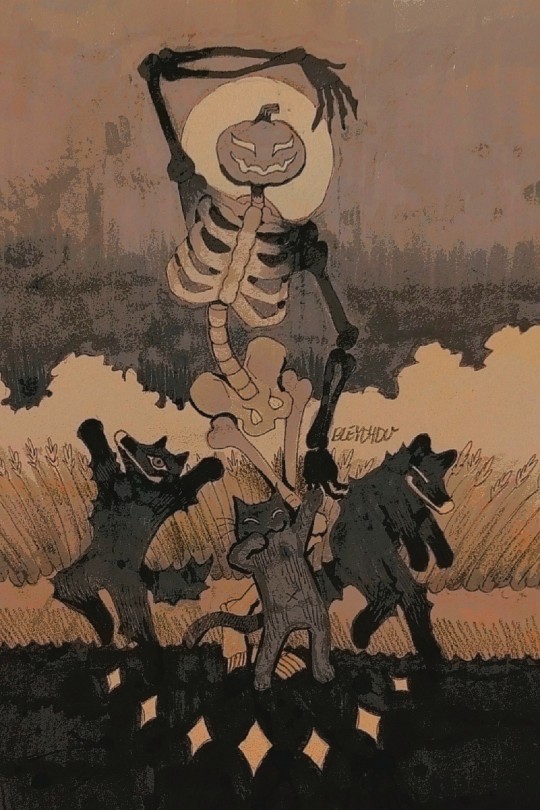
Samhain Upon Us
#my art#celtic#samhain#fall#autumn#wolf#fox#cat#skeleton#pumpkin#harvest#festival#dancing#pencil#marker#digital#mixed media
338 notes
·
View notes
Text
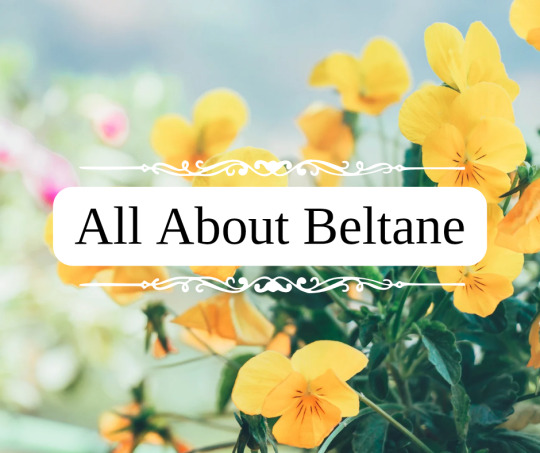
All About Beltane
Beltane, also known as Bealtaine in Irish, is a Gaelic holiday traditionally held on May 1st or the halfway point between the spring equinox and the summer solstice. It is believed to be named after the Celtic sun god Belenus. It was widely observed in Ireland, Scotland, and the Isle Of Man, and is one of the 4 major Celtic fire festivals. It is mentioned in even the earliest Irish literature and marked the beginning of summer and used as the marker to drive cattle into their summer pastures. Although public celebrations have mostly fallen out after the 20th century and many traditions have been mixed with other cultural holidays (such as the Roman holiday May Day), many Celtic Neopagans and Wiccans still celebrate, and many local traditions still continue, causing it to now get a cultural revival.
Traditionally, rituals were held to protect the livestock that moved pastures, along with crops, dairy products, and people, and to encourage growth. It was also important to appease the Aos Sí, or nature spirits/fairies, which were believed to be more active then.
According to early medieval texts in 908, druids would make two bonfires and drive cattle between them to protect them from disease. In the 18th and 19th centuries, bonfires continued to be an important part of the celebrations. Before the bonfires were lit, all hearth fires were put out, and then relit using the fire from the Beltane bonfires after the celebration.
Continuing into the 19th century, cattle were still driven over or between flames, or sometimes around the fires or made to leap over. The people themselves did as well for good luck and protection. Once the fires died down, people would dab themselves with the ashes and sprinkle them over their crops and livestock. Torches from the bonfires would also be brought home and carried around the home or boundaries, and also used to relight the hearth.
Food was also an important part of the Beltane festival, and usually included a feast of lamb, which, historically, was sacrificed. In 1769, it was written that a hot drink, called a caudle, made of eggs, butter, oatmeal, and milk was served, along with tossing a bit on the ground as an offering. A Beltane Bannock, a type of oatmeal cake, was also written to be important and had a few traditions around it.
In one tradition, the Beltane Bannock had nine knobs on it and each person would take the bannock and face the fire, proceeding to break off the knobs of bannock one at a time and tossing them behind their shoulder as an offering to the spirits for protection over their livestock and from predators (one for the cow, one for the sheep, one for the fox, etc). Afterwards, they would drink the caudle.
According to other 18th century writers, there was another Beltane Bannock tradition where the bannock would be cut into slices and one was marked with charcoal. The slices were then thrown into a bonnet and everyone would take one out while blindfolded. According to one writer, whoever pulled the marked bannock slice had to leap through the fire 3 times. According to another, the person would instead be pretend-thrown into the fire and for some time afterward people would talk about the person as if they were dead. This may have always been symbolic, or it may have been a tradition from a time where actual human sacrifice was used. This tradition was also near identical to May Day traditions that occurred in Wales and other parts of Europe, however.
Other traditions including flowers and plants were also observed, especially ones that evoked fire. Documents from the 19th century cite that yellow and white flowers, such as primrose, rowan, hawthorn, gorse, hazel, and marsh marigold was used and placed at doorways and windows. Sometimes they were strewn into garland, and other times they were made into bouquets, made into crosses, or fastened to them. They were also fastened to cows and milking/butter equipment.
Decorating a May Bush or May Bough was also a widespread tradition, and it usually consisted of a small tree or branch (typically hawthorn, rowan, holly, or sycamore) decorated with bright flowers, ribbons, candles, painted shells or egg shells from Easter, and more. In some traditions they also decorated it with gold and silver May Balls, which were hurling balls, that were then either given out to children or gifted to winners of a hurling match. It was also known as the only acceptable time to cut a thorn tree, as they were associated with fairies and may have also been a relic of worshipping tree spirits. It would either be decorated where it grew, or branches hung over windows, doors, roofs, and barns either inside or outside. Traditionally, it was the responsibility of the eldest of the house to decorate it.
The tree was usually left up until May 31st, but in some traditions it would be burned in the festival bonfire after singing and dancing around it. In Dublin and Belfast, May Bushes were brought into town and decorated by the whole neighborhood, with each neighborhood competing for the most beautiful bush. These competitions could also lead to neighborhoods attempting to steal others May Bushes, which eventually led to the May Bush being outlawed in Victorian times.
Appeasing the fairies was also a big part in Beltane celebrations, with many traditions revolving around offerings to the fairies and also warding them off, as there were many fears around them stealing dairy. One protection tradition was to leave 3 black coals under the butter churn. Another was to hang May Boughs on the milk pails. And yet another was to hang cattle tails in the barns. Flowers were also used to decorate the cattle's horns for good luck.
Farmers would also lead a procession around the boundaries of the farm and would "carry with them seeds of grain, implements of husbandry, the first well water, and the herb vervain (or rowan)", stopping at the four cardinal points of direction starting at the east, and performing rituals towards each direction at each stop. These processions were said to bring protection of their farm produce and encourage fertility. Some people also made the sign of the cross using milk on the backside of cattle for good luck.
As for fairy offerings, one tradition was to pour milk or leave food at places associated with the fairies such as "fairy trees". In Ireland, cattle were brought to "fairy forts" where a small amount of their blood was poured into the earth with prayers of the herd's safety. Sometimes, the blood would be left to dry and then be burnt.
Visiting holy wells was also a popular way to celebrate Beltane. Visitors would walk sunwise, moving from east to west, around the well while praying for health. They would then leave offerings of coins or cloth. The first water drawn from the well on Beltane was thought to be especially potent, and would bring good luck to the person who drew it.
Morning dew on Beltane was also thought to bring goodluck and health, and maidens would wash their face with it or roll in it at dawn or before sunrise on Beltane. It was also collected in a jar, left in sunlight, and then filtered. The dew was said to increase sexual attractiveness, maintain youthfulness, protect from sun damage, and ensure skin health during the ensuing year.
Modern day celebrations may vary from these more traditional festival activities, but many choose to incorporate or take inspiration from the traditions at least. Popular traditions still revolve around bonfires, feasts, decorating a May Bush, and focusing on protection and growth.
Beltane Associations
Colors - yellow, white, red, green
Food - lamb, milk and dairy, beef, bannocks, caudle, cakes
Animals - cattle, sheep, other herd animals
Items - primrose, rowan, hawthorn, gorse, hazel, marsh marigold, holly, sycamore, yellow and white flowers, flower garland, greenery, morning dew, dairy products
Crystals - citrine, fire agate, fire opal, carnelian, red and yellow jasper
Other - protection, fertility, good luck, fire, smoke, ash, sun, bonfires, farming
Ways To Celebrate
light a bonfire
jump over or dance around a bonfire
decorate a May Bush or May Bough
craft and hang flower garland
bake Beltane Bannocks
collect morning dew
create some caudle
ward and protect your home or property
leave offerings for the fairies
focus on protection, growth, and luck magic
enjoy time in the sun
have a feast
create a bouquet out of yellow and white flowers
visit a farm or petting zoo
#beltane#beltaine#bealtaine#celtic#gaelic#irish#scottish#pagan#witch#witchy#wicca#may day#magick#magic#magickal#grimoire#tradition#celebrate#bonfire#fire festival#witchcraft#spiritual#witchblr#witch community#paganism#pagan witch#celtic paganism#paganblr#about#dairy
135 notes
·
View notes
Text
BELTANE
May Day / Fire Festival

When is Beltane?
It is celebrated on the first day of May, marking the near-beginning of summertime. May 1st is roughly the halfway point between the spring equinox and the summer solstice.
What does Beltane mean?
"Beltane" can be inferred as the Gaelic word for "bright fire." It signifies that the days are growing longer and warmer, and welcomes fertility, life, and love. The veil between the human world and the spirit world has become thin, connecting us to fairies, nature spirits, and the dead.
Who does Beltane celebrate?
One may worship any fertility deity on Beltane, including Cernunnos, the Celtic God of vegetation, fauna, and fertility; Flora, the Roman Goddess of flowers, fertility, and springtime; and Belenus, the Celtic God of the sun, fire, and healing.
----------
BELTANE TRADITIONS
Work with stones that activate the heart and spirit, including rhodonite, rhodochrosite, rose quartz, emerald, and jade.
Use fresh, sweet-smelling flowers and herbs like roses, dandelions, lavender, mugwort, woodruff, and spearmint, all in which promote solace, pain relief, self-love, and spiritual healing. Mugwort may be beneficial to relieving colic and pain during mensuration.
Prepare and consume meals with honey, mint, and lemon, each considered aphrodisiacs. This mix of sweet and refreshing marks the revival of flora and fauna in the warming months. These three ingredients are also relatively hardy and are available year-round, symbolizing vitality and spirit.
Decorate and adorn yourself with soft pinks, greens, whites, and yellows.
Incorporate animal imagery (e.g., figurines, photographs, drawings, et cetera) of birds, cattle, stags, and other creatures associated with crop, fertility and strength.
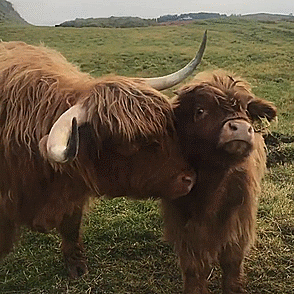
BELTANE ACTIVITIES
Create and/or wear a flower crown. Use seasonal flowers--especially white, yellow, and orange flowers to represent fire--and decorate your hair with them!
Take a ritual bath: add lavender, coarse salts, mint, and rose petals to your relaxing bath.
Light a fire. Safely light a bonfire and indulge as you would like: sit and chat by the fire, feast over it, or safely dance around it. You could also take a blank sheet a paper, write down one thing you would like to achieve in the year to come, and then toss it into the flames.
Dance around the Maypole. The maypole is a ceremonial folk dance performed to ensure fertility and union. People dance around a tall wooden maypole and weave colored ribbons by walking in a circle in opposite directions from each other.
youtube
Make a Beltane altar. In the center of the altar, add an image/icon of a fertility god(dess) of your choice, and decorate around it with seasonal flowers, bells, burning candles, soft colors, and sugar or honey.
Get creative with recipes! Carlota Santos, who is the author of Magika, recommends drinking freshly made lemonade and baking buttery sugar cookies!
Carlota Santos’ Beltane Cookie Recipe

#I cannot believe that it is already May#witchblr#witchcraft#beltane#celtic paganism#may day#maypole#fire festival#Belenus#God of sun and fire#Youtube
65 notes
·
View notes
Text

Happy Equinox!
#ostara#spring equinox#vernal equinox#spring#first day of spring#fresh start#rebirth#transformation#spring is here#spring time#spring 2024#ostara aesthetic#wheel of the year#solar year#solar#spring garden#spring cleaning#spring awakening#spring flowers#spring aesthetic#spring magic#spring nature#spring vibes#witches#pagan#celtic paganism#paganism#pagan festival#pagan ritual#pagan witch
86 notes
·
View notes
Text

Happy Samhain bitches 💋🎃🖤
#mine#fall photography#fall decor#fall vibes#autumnal#autumn#antiques#samhain#celtic paganism#norse paganism#pagan#rituals#festivities#halloween#all hallows eve#hellenic polytheism#polytheist#hekate#hades#Hestia#persephone
16 notes
·
View notes
Text
How to Celebrate Beltane Discreetly
Just a list of some ideas from someone who's been discreetly celebrating pagan/witchy holidays for about four? Five? Years on and off.
I don't practice all of my suggestions because I live in a strict home, but I did try and include some ideas that are do-able in more lenient living situations.
Please reblog and add any suggestions that I didn't think of!
Wear firey/bright colors to emulate Beltane's fire festival properties.
Create a Poem or two in honor of Brigid
Listen to music with "poetic" vibes or "fiery" vibes
If you're able to-- light some candles or burn incense. Battery operated candles can also be a perfect substitution!
Cook a nice stove-top meal (the flames of the stove can symbolize the flames of Beltane).
If you can't use a stove but like spicy food, maybe try and get some spicy treats and treat the heat of the spice as being symbolic of Beltane's flames!
Meditate to the sound of crackling flames. Or just meditate in general!
They say the veil between worlds is thinnest on both Beltane and Samhain... Sooo I like to wear a head covering when I go out (and it can be as simple as a bandana or a headband!)
I also like to sit and listen to windchimes, ring bells, and admire my suncatcher because they capture the "otherworldly" vibes Beltane can bring!
If you can, have a bonfire! You can always invite friends/family and have a party but use the time to secretly admire the flames.
I am an absolute weirdo so one of my favorite nighttime activities in place of a bonfire is to sit in my pitch-black room at night and chant some of the poems I made earlier in the day!
Don't feel bad if you can't do any of them for any reason. What really matters is you're here and doing your best to carry on <33
Blessed Beltane!
#beltane#happy beltane!#paganism#pagan#paganblr#pagans of tumblr#celtic pagan#witchcraft#witchblr#witch#witchy#celtic paganism#witches of tumblr#closeted pagan#closeted witch#pagan worship#fire festival
53 notes
·
View notes
Text
Blessed Imbolc, Brigid be praised!
#mother witch ramblings#imbolc#wheel of the year#brigid#celtic paganism#celtic goddesses#witchblr#paganblr#pagan holidays#gaelic festivals#spring is coming
10 notes
·
View notes
Text
1 note
·
View note
Text
Guys I don’t think you understand how excited I am for this years Beltane festival !!!
I’m going with a bunch of my friends :)
#fattfemme yaps:)#im so excited#i love my friends#aaaaaahhhhhhhhh#unfortunately everytime I go my mum says she wants me to come back with a pagan boyfriend????!!#LADY WHAT DO YOU MEAN LEAVE ME ALONE#beltane#Beltane fire festival#celtic paganism#pagan holidays#paganblr#pagan witch#paganism#pagan#pagans of tumblr#pagan community#lesbian#sapphic#femme lesbian#fat femme#femme#lesbian bait#lesbianism#lesbian yearning
7 notes
·
View notes
Text

Happy Halloween!🎃
🦹🏻♀️🧛🏻♂️👩🏾🚀
Good luck getting a mountain of sweets tonight!
🍫🍭🍬
#history#trick or treating#samhain#all saints day#halloween#spooky history#scotland#souling#ireland#ancient#halloween girl#european history#pagan festival#halloween traditions#happy halloween#medieval europe#1500s#holiday#christianity#soul cakes#halloween history#spooky season#trick or treat#celtic#fall#nickys facts
9 notes
·
View notes
Text
Blackcrowing's Irish Pagan Festivals Master Post
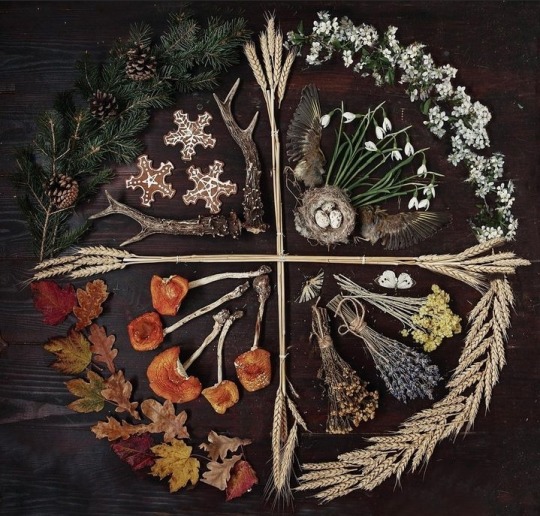
Samhain Festival
Samhain Authentic Foods
Imbolg Festival
Imbolg Authentic Foods
Bealtine Festival
Bealtine Authentic Foods
Lughnasadh Festival
Lughnasadh Authentic Foods
When is the 'New Year'?
My kofi
Art Credit - Familiar_flower
#lughnasa#lúnasa#lughnasadh#bealtaine#Baltaine#Beltane#imbolg#imbolc#fire festivals#fire festival#irish#irish mythology#irish polytheist#irish polytheism#irish pagan#irish paganism#irish reconstructionism#irish reconstructionist#celtic#celtic mythology#celtic pagan#celtic paganism#celtic polytheist#celtic polytheism#celtic reconstructionist#celtic reconstructionism#blackcrowing#samhain#pagan#paganism
418 notes
·
View notes